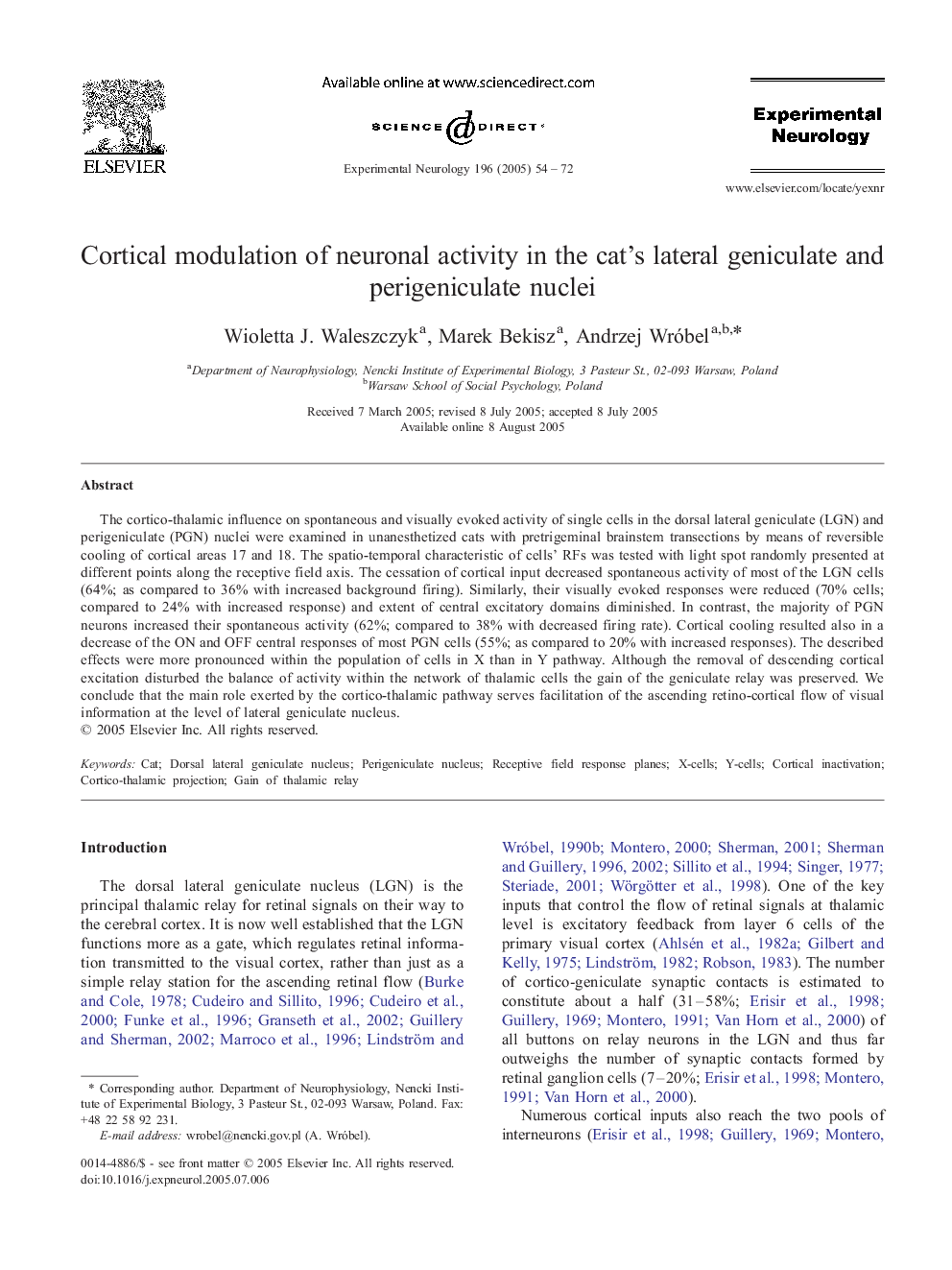| Article ID | Journal | Published Year | Pages | File Type |
|---|---|---|---|---|
| 9191990 | Experimental Neurology | 2005 | 19 Pages |
Abstract
The cortico-thalamic influence on spontaneous and visually evoked activity of single cells in the dorsal lateral geniculate (LGN) and perigeniculate (PGN) nuclei were examined in unanesthetized cats with pretrigeminal brainstem transections by means of reversible cooling of cortical areas 17 and 18. The spatio-temporal characteristic of cells' RFs was tested with light spot randomly presented at different points along the receptive field axis. The cessation of cortical input decreased spontaneous activity of most of the LGN cells (64%; as compared to 36% with increased background firing). Similarly, their visually evoked responses were reduced (70% cells; compared to 24% with increased response) and extent of central excitatory domains diminished. In contrast, the majority of PGN neurons increased their spontaneous activity (62%; compared to 38% with decreased firing rate). Cortical cooling resulted also in a decrease of the ON and OFF central responses of most PGN cells (55%; as compared to 20% with increased responses). The described effects were more pronounced within the population of cells in X than in Y pathway. Although the removal of descending cortical excitation disturbed the balance of activity within the network of thalamic cells the gain of the geniculate relay was preserved. We conclude that the main role exerted by the cortico-thalamic pathway serves facilitation of the ascending retino-cortical flow of visual information at the level of lateral geniculate nucleus.
Related Topics
Life Sciences
Neuroscience
Neurology
Authors
Wioletta J. Waleszczyk, Marek Bekisz, Andrzej Wróbel,
